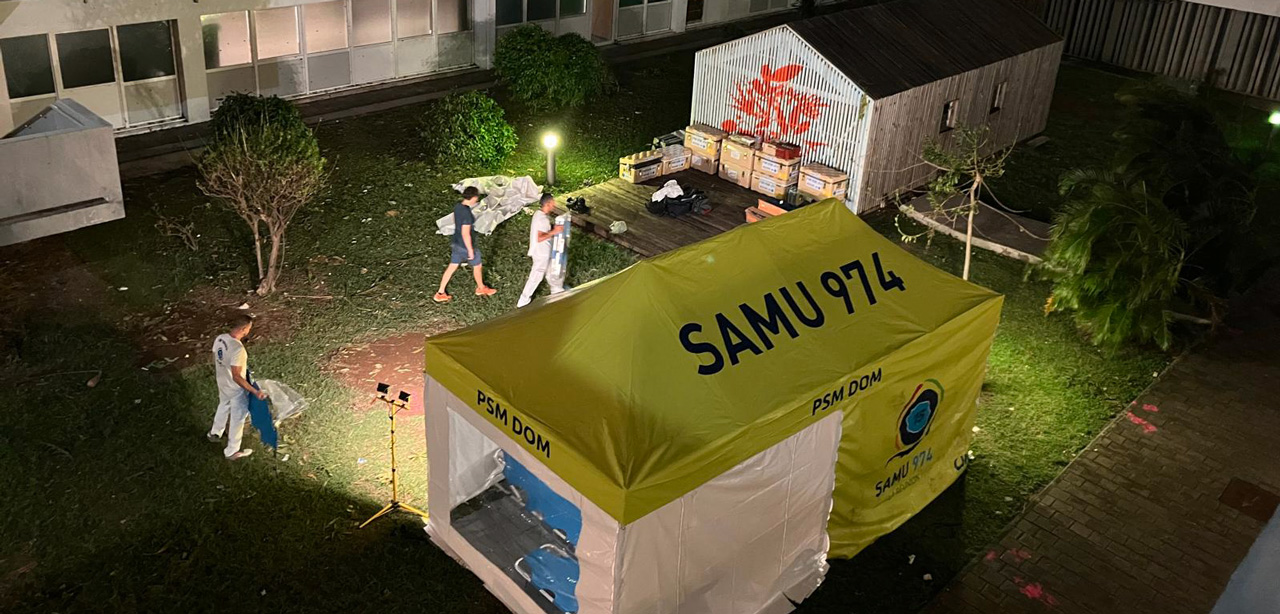Study question: is there an evolution in the risk of operated cryptorchidism in France and does local geographical environment appear as an important trigger for this defect? Summary answer: we observed an increase of the risk of operated cryptorchidism in boys under the age of 7 years during the period 2002-2014 and a strong spatial heterogeneity, with the detection of spatial clusters suggesting environmental factors. What is known already: epidemiologic data on cryptorchidism are scarce and its etiology is poorly understood. As part of the testicular dysgenesis syndrome, cryptorchidism is suspected to be a male genital developmental disorder caused by endocrine disruptor chemical (EDC) exposure during the prenatal period. Study design, size, duration: this was a retrospective and descriptive study using data from the French national hospital discharge database, in the 2002-2014 study period. We built an indicator to reflect incident cases of operated cryptorchidism in boys under the age of 7 years in metropolitan France, with an algorithm using specific codes for diseases (ICD-10 codes) and surgical acts (CCAM codes). Participants/materials, setting, methods: the study population was composed of 89 382 new cases of operated cases of cryptorchidism in boys under the age of 7 years. We estimated the temporal evolution of the incidence rate. We fitted a spatial disease-mapping model to describe the risk of cryptorchidism at the postcode scale. We used Kulldorff's spatial scan statistic and Tango's flexibly shaped spatial scan statistic to identify spatial clusters. Main results and the role of chance: the estimated increase in the incidence of operated cryptorchidism from 2002 to 2014 was equal to 36.4% (30.8%; 42.1%). Cryptorchidism displayed spatial heterogeneity and 24 clusters (P < 0.0001) were detected. The main cluster was localized in a former coal mining and metallurgic area in northern France, currently an industrial area. The cluster analysis suggests the role of shared socio-economic and environmental factors that may be geographically determined and intertwined. The industrial activities identified in the clusters are potentially the source of persistent environmental pollution by metals, dioxins and polychlorinated biphenyls. Limitations, reasons for caution: the indicator we used reflects operated cases of cryptorchidism, with an under-evaluation of the health problem. We cannot exclude a possible role of the evolution and local differences in surgical practices in the observed trends. Our inclusion of boys under 7 years of age minimized the biases related to differences in practices according to age. Regarding the environmental hypothesis, this is an exploratory study and should be considered as a hypothesis-generating process for future research studies. Wider implications of the findings: to our knowledge, this is the first descriptive study to address nationwide trends of operated cryptorchidism with detection of spatial clusters, with a very large sample allowing great statistical power. Our results generate plausible environmental hypotheses, which need to be further tested. Study funding/competing interest(s): this study was entirely funded by Santé publique France, the French National Public Health Agency. All authors declare they have no actual or potential competing financial interest.
Auteur : Le Moal J, Goria S, Guillet A, Rigou A, Chesneau J
Human Reproduction, 2021, vol. 36, n°. 5, p. 1383-1394


